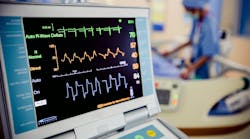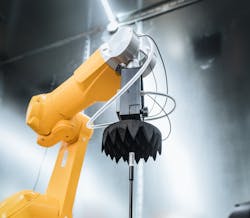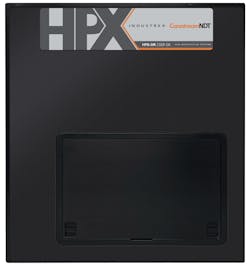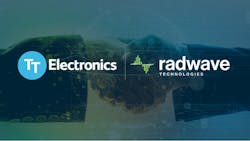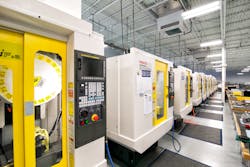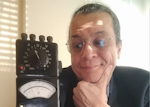Download this article in .PDF format.
From addressing COVID-19 to improving your track times, advanced medical technology is finding itself in all kinds of places.
Medical electronics have gained a significant amount of functionality and capability in recent years, and through technology convergence has been manifested in a variety of personal medical solutions that have impacted the way we address medical issues in people. From Cloud-enabled tech to advanced wearable devices, medical technology is also moving from the hospital to the home, and other places as well.
Along with the recent experience with COVID-19 mitigation, activities such as public monitoring and environmental awareness in public places have also expanded the use of next-generation medical technology to office spaces and public venues. The blurring of the lines between medical, public health, spots, fitness, wellness, and other aspects of life-quality management has also created challenges for those who design, test, and evaluate them.
Serving the community and home
When we asked Steve Hayes, Technical Director of Connected Technologies at Element, he explained that there is a general trend in the medical industry to do as much as possible in the community and home, rather than in a professional healthcare facility (hospital). The reason for this is that these large facilities are under pressure, mainly due to the rising age of the population, and if this pressure can be reduced by performing lower risk, routine type work remotely, it will free up critical space and resources to focus on lifesaving and complex issues.
There are secondary benefits such as reduced traffic on the roads, improving the air quality and less fossil fuel usage if these minor medical tasks can be performed at home. There is another problem with unwell people mixing with other unwell and vulnerable people: it increases the chances of them catching something completely unrelated to the main purpose of the visit to hospital.
Whilst moving more of the clinical work into the community frees up space, it does mean introducing new risks, as there is little or no control of the environment. For example, you can’t restrict someone’s cellphone use on their property just because the person in the next house is using an ECG machine. There are other issues such as giving some medical electronics to a person for them to operate themselves, to take heart rhythm measurements etc.—what happens if the person is elderly or infirm? Do they have the dexterity to use the equipment as intended or should the equipment be modified with bigger buttons, displays etc? Are they more likely to drop the device onto the floor and hence it needs to be designed to be more robust?
The examples above help to solve one problem but create new ones as a result. These newly introduced risks become the responsibility of the manufacturer, who must carefully consider a wide variety of issues covering the product's fundamental functions (known as essential performance) as well as all the potential external influences on the product that could change its essential performance and basic safety characteristics.
Element works with a wide range of manufacturers to help them work through the wide-ranging hazards of their products and risks associated with them as well as performing critical tests that demonstrate that the product remains safe and fit for purpose. As the products themselves become more complex, the tests, or rather the monitoring of the product, becomes more complex. Imagine using the latest 5G technology to perform surgery remotely—how will a manufacturer confirm that the movement of the cutting instrument is as precise as physically holding the instrument and being in the same room. These are just some of the daily challenges Element is presented with and how they help manufacturers get their product to market safely.
Seeing is believing
Carestream’s Non-Destructive Testing (NDT) group recently launched the HPX-DR 2329 GK, a cutting-edge detector enabling superb resolution and defect detection. The HPX-DR 2329 GK’s 75 μm resolution offers powerful image capture for minuscule defect detection, and is an ideal option for the inspection of critical parts and assemblies to identify defects, including small cracks, porosity and flaws other detectors may miss.
Designed for industries that require the highest resolution possible to meet stringent industry standards, including medical and aerospace, the detector aims to improve confidence in accurate image analysis and reporting, increase productivity, and lower costs. In addition, it expands the variety of parts that can be examined and improves the accuracy of each inspection. Lightweight with a compact size of 230 x 290 mm and thin profile at 17 mm, the HPX-DR 2329 GK detector can fit in tight spaces, allowing for imaging and positioning in confined areas.
According to Marty Graen, Global General Manager for Carestream NDT, the launch of the HPX-DR 2329 GK underscores the company’s commitment to offer innovative solutions that are cost-effective and improve productivity. The HPX-DR 2329 GK detector works with Carestream’s INDUSTREX Digital Viewing Software, which operates seamlessly across all Carestream NDT computed radiography (CR) and digital radiography (DR) modalities.
Environmental monitoring
Working with Honeywell to establish new standards related to indoor air quality, safety and regulatory compliance, ASM Global is promoting its VenueShield LIVE proprietary program for venue reopenings and operations. Honeywell will consult with ASM on guidelines related to deploying healthy-building technology including indoor air quality, safety and security, and personal protective equipment (PPE). Honeywell will also create a custom, real-time Healthy Buildings dashboard for the VenueShield LIVE program to help ASM’s facilities staff quickly identify and correct critical building control issues.
Additionally, Honeywell will work with the ASM Global venue network to deploy a variety of technologies that support smarter, safer, and more sustainable venues to improve the overall guest experience, including solutions to enhance overall building operations; mobile computing and data capture technologies to expedite ticketing, concessions and retail experiences; and more environmentally preferable products to help the venues’ efforts to reduce their carbon footprint. ASM Global President and CEO Ron Bension pointed out how aligning with Honeywell will help ASM create the world’s finest audience experiences at a variety of venues.
Jeff Kimbell, Honeywell Senior VP and CCO, explained that as vaccine programs progress around the world, the desire for normalcy continues to increase. Live events such as concerts, sports and conventions contribute greatly to the vigor and excitement of daily life. Honeywell is working with the ASM Global team to not only help audiences feel more confident about coming to live events, but also in supporting venue modernization and digitization by providing greater automation and insight into the portfolio performance and a more seamless audience experience.
VenueShield LIVE is deployed at more than 325 ASM Global facilities around the world, already providing high levels of cleanliness and safety, while inspiring consumer confidence, all in coordination with leading medical professionals, industry experts and public health officials. Honeywell’s Healthy Buildings solutions integrate air quality, safety, and security technologies, along with advanced analytics to improve indoor air quality while meeting energy-efficiency goals to create a more productive and better occupant experience.
Surgical navigation
When we reached out to TT Electronics EVP, Michael Leahan, he brought up the company’s collaboration with Radwave to bring an accurate, reliable, and customizable electromagnetic (EM) tracking platform to the surgical navigation market. This advanced technology offers solutions for medical device innovators who are seeking to add new or improved EM capabilities to their medical devices. The complete navigation system can be customized to accurately track a broad spectrum of minimally invasive diagnostic and therapeutic devices during surgical procedures with no clear line of sight.
The Radwave electromagnetic tracking platform is a new option for tracking surgical instruments designed from the ground up for seamless integration into medical devices and the clinical environment. The modular platform can be rapidly customized to meet specifications and is highly accurate with a fast-sampling rate using state-of-the-art algorithms and components. The thin and lightweight field-generating antenna is translucent during fluoroscopy and can be easily customized to accommodate different sensing volumes.
The platform also features a fully encrypted API that is easy to integrate and comes with an open-source SDK. TT Electronics will support Radwave’s platform by providing complete manufacturing capabilities spanning a range of critical sensor technologies. TT’s sensor technologies enable the platform to deliver the highest degree of accuracy and precision, even in challenging settings where other EM systems have been limited by interference or sensing volume constraints.
Biomedical sensing
Joris van Campenhout, Optical I/O Program Director at imec, talked about the need to accelerate the adoption of silicon photonics in advanced applications such as biomedical sensing. A collaborative effort for the hybrid integration of InP lasers and amplifiers with Silicon photonics is going on with Sivers Photonics and ASM AMICRA Microtechnologies. The group recently announced the successful wafer-scale integration of indium-phosphide (InP) distributed feedback (DFB) lasers from Sivers’ InP100 platform onto imec’s silicon photonics platform (iSiPP).
Using ASM AMICRA’s latest NANO flip-chip bonder tool, the InP DFB laser diodes were bonded onto a 300 mm silicon photonics wafer with an alignment precision within 500 nm, enabling reproducible coupling of more than 10 mW of laser power into the silicon nitride waveguides on the silicon photonics wafer. Many legacy silicon photonic systems have issues such as off‐chip laser coupling losses, a large physical footprint, and a high packaging cost.
Together with its partners Sivers and ASM AMICRA, imec is extending its silicon photonics prototyping services to include high-precision flip-chip integration capability of InP lasers and amplifiers. In the recently completed development phase, C-band InP DFB lasers have been passively aligned and flip-chip bonded onto 300 mm silicon photonics wafers with ultra-high alignment precision within 500 nm (three-sigma value), resulting in reproducible on-chip waveguide-coupled laser power beyond 10 mW.
Going forward, the hybrid integration portfolio will be extended with reflective semiconductor optical amplifiers (RSOA), leveraging the etched-facet capability of Sivers’ InP100 technology, and ASM AMICRA NANO’s superior bonding alignment precision. This capability will enable advanced, external cavity laser source types, as required for emerging optical interconnect and sensing applications, and should become available in early 2022.
A precise fit
LeNoir “Len” E. Zaiser III and his son, Len E. Zaiser IV, are entrepreneurs who have empowered medical manufacturing with advanced CNC machines. Putting their production process first, Len Zaiser IV said building skilled CNC machinists and programmers, investing in world-class technology, and refining manufacturing procedures creates the best product, a “Field of Dreams” philosophy,” Len Zaiser IV said. “If you build it, they will come.”
One such industrial force multiplier is the RoboDrill. When Len Zaiser III founded Structure Medical in 2005, the Zaisers used the machine to manufacture a titanium pedicle screw assembly—a mechanically complex orthopedic screw inserted after spinal surgeries. According to Len Zaiser IV, they determined it was the most profitable job in the whole factory in less than a year.
Structure Medical continued to grow, as did the number of RoboDrills in the shop. Operators became accustomed to the usability of FANUC controls, Zaiser said, and the machines themselves produced precise, accurate, and reliable components. He said they became known for their titanium and polyetheretherketone (PEEK) implants and other complex components, things that other people couldn’t make. Although now under new ownership, Structure Medical continues to grow.
Conformity assessment
Dr Andreas Purde, Global Director Active Medical Devices at TÜV SÜD, brought up their cooperation with Johner Institute for the qualitative expansion of its innovative services in the medtech sector. The testing and certification company plans to offer medical device manufacturers a digital solution for conformity assessment procedures as early as this year. Using the standardized digital solution developed by the Johner Institute, TÜV SÜD plans to significantly reduce the efforts involved in the submission and review of documentation, and thus boost the efficiency and predictability of conformity assessment procedures.
Professor Christian Johner, Head of Johner Institute, explained the digitization solution is a standardized platform with open interfaces, eliminating legacy document processing. Freedom from the paperwork of the past enables people to embrace the possibility of improving productivity and their international competitive strength.
In the future, Dr Andreas Purde, Global Director Active Medical Devices at TÜV SÜD added, manufacturers can use the new tool to record their technical documentation and provide it directly to TÜV SÜD assessors without first having to convert the content into hard copies. The new platform supports closer interaction between manufacturers and TÜV SÜD. The open interfaces on the platform are the grounds for an ecosystem for a new generation of software tools, giving manufacturers free choice of their Notified Body.
A reference architecture for hospitals
Hans Bartmann, Managing Director of SparxSystems Central Europe, talked about how the current Corona pandemic shows us how important modern and crisis-proof hospital management is. Nictiz is the Dutch competence center for e-health. Based on Enterprise Architect, the hospital reference architecture ZiRA was created. The framework is used to facilitate the inventory, development and innovation of hospital IT.
ZiRA (Ziekenhuis Reference Architecture) was born out of the realization that Dutch hospitals were dealing with similar problems, but there was no framework for cooperation in the field of IT. So 10 IT specialists from different hospitals in the Netherlands joined forces and developed ZiRA, using Enterprise Architect, based on information needs and best practice examples. ZiRA is part of the iZiekenhuis community, in which hospitals share their knowledge and experiences in terms of information provision.
ZiRA also provides a digital platform for sharing knowledge, information and best practices. In addition, workshops with and for information architects are organized on a regular basis. The ZiRA reference architecture is the replacement for the Domain Reference Model for Hospitals (RDZ), which has been used for many years to develop various applications in Dutch hospitals.
A separate practice manual explains the general principles of ZiRA and gives practical examples. It states that ZiRA provides a reference framework and helps in the development of the organization and information provision in hospitals. The reference architecture is intended to support daily work but does not claim to be complete or absolutely correct. By means of concrete examples, the practitioner's handbook is intended to encourage people to join the growing ZiRA community and to have their work made easier by modelling.
As in many companies, models are often used in hospitals to map the existing IT. This gives an overview of hardware and software and their interdependencies, which helps in replacing obsolete things as well as in further developing the system. The Erasmus University Medical Center in Rotterdam is considered one of the most important university hospitals in Europe and has used ZiRA as the basis for its own Enterprise Architecture Repository (EAR).
An EAR is ideally suited to describe the ACTUAL and TARGET states of IT mentioned above. Regardless of the architecture framework chosen, Enterprise Architect is a fully-fledged EAR that can store and manage all architecture content. In Erasmus MC, they added their own organisation-specific concepts: organizations, subsidiaries, themes, pillars, departments, etc. The applications were read from the CMDB (Configuration Management Database) and linked to the application functions. In addition, the own architecture principles and the data centers, servers, networks and nodes from the infrastructure layer were added.
This process is illustrated using the example of the business activity “Taking anamnesis.” Erasmus MC thus used the meta-model, structure and concepts of ZiRA as a basis for setting up the repository, but enriched it with its own organization-specific elements.
The Antoni van Leeuwenhoek (AVL) Hospital in Amsterdam is a leader in cancer research and treatment. With the help of the consulting company Logiqol, AVL launched the "Integrated Capacity Management" program in 2017 to optimize logistics processes in the healthcare sector and is thus able to better manage throughput and access times. With ZiRA, it was possible to provide the required control information.
At Gelre Hospitals in the Netherlands, the ZiRA information model was used to develop a business information model. For example, the distinction between activity and outcome information objects proposed in ZiRA was found to be very useful and was adopted. The business model should provide an overview of which business information objects exist in the primary care process and how they relate to each other. In a functional and technical design, it is now easy to determine whether information objects already exist and can be reused or whether a new object needs to be created.
